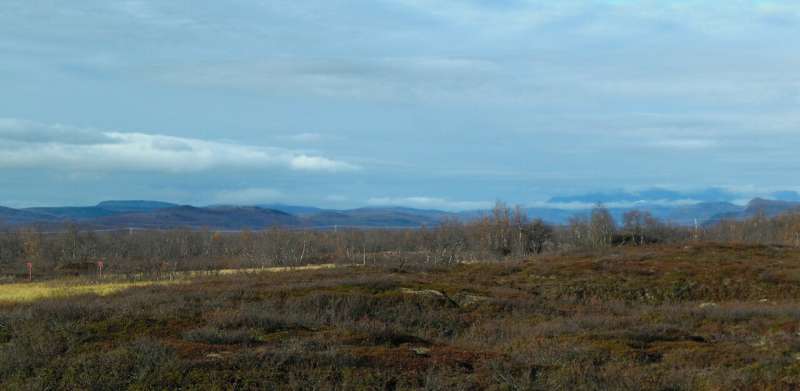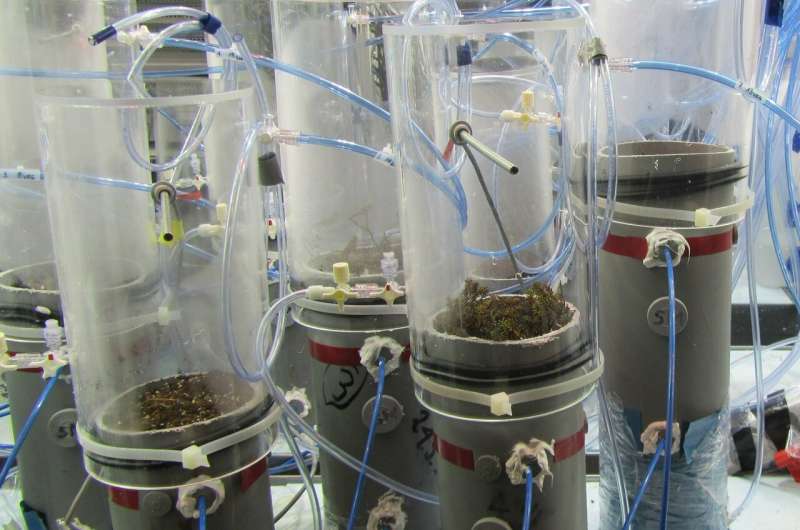Sampling site near Kilpisjärvi, Finnish Lapland. Credit: Carolina Voigt
A new study led by researchers from the University of Eastern Finland and the University of Montreal, in cooperation with researchers from various Nordic research institutions, finds that peatlands may strengthen the permafrost-carbon feedback by adding to the atmospheric CO2 burden post-thaw.
Temperatures in the Arctic are rising twice as fast as in the rest of the world, causing permafrost soils to thaw. Permafrost peatlands are biogeochemical hot spots in the Arctic as they store vast amounts of carbon. Permafrost thaw could release part of these long-term immobile carbon stocks as the greenhouse gases carbon dioxide (CO2) and methane (CH4) to the atmosphere, but how much, at which time-span and as which gaseous carbon species is still highly uncertain.
A new study led by researchers from the University of Eastern Finland and the University of Montreal, in cooperation with researchers from various Nordic research institutions, finds that peatlands may strengthen the permafrost-carbon feedback by adding to the atmospheric CO2 burden post-thaw. The study was recently published in Global Change Biology - a leading journal in environmental science.
By applying a novel experimental approach using intact plant-soil systems (mesocosms), the authors were able to simulate permafrost thaw (thawing of the upper 10-15cm of permafrost) under near-natural conditions. Greenhouse gas flux dynamics were monitored via high-resolution flowthrough gas measurements, combined with detailed monitoring of soil greenhouse gas concentration dynamics, yielding insights into gas production and consumption potential of individual soil layers. The study finds that under dry conditions, peatlands may strengthen the permafrost-carbon feedback by adding to the atmospheric CO2 burden post-thaw. However, as long as the water table remains low, the results reveal a strong CH4 sink capacity in these types of Arctic ecosystems pre? and post-thaw, with the potential to compensate for part of the permafrost CO2 losses over longer timescales.
Intact plant-soil systems (peat mesocosms) set up in a climate-controlled chamber. Credit: Carolina Voigt
More information: Carolina Voigt et al, Ecosystem carbon response of an Arctic peatland to simulated permafrost thaw, Global Change Biology (2019). DOI: 10.1111/gcb.14574
Journal information: Global Change Biology
Provided by University of Eastern Finland
























